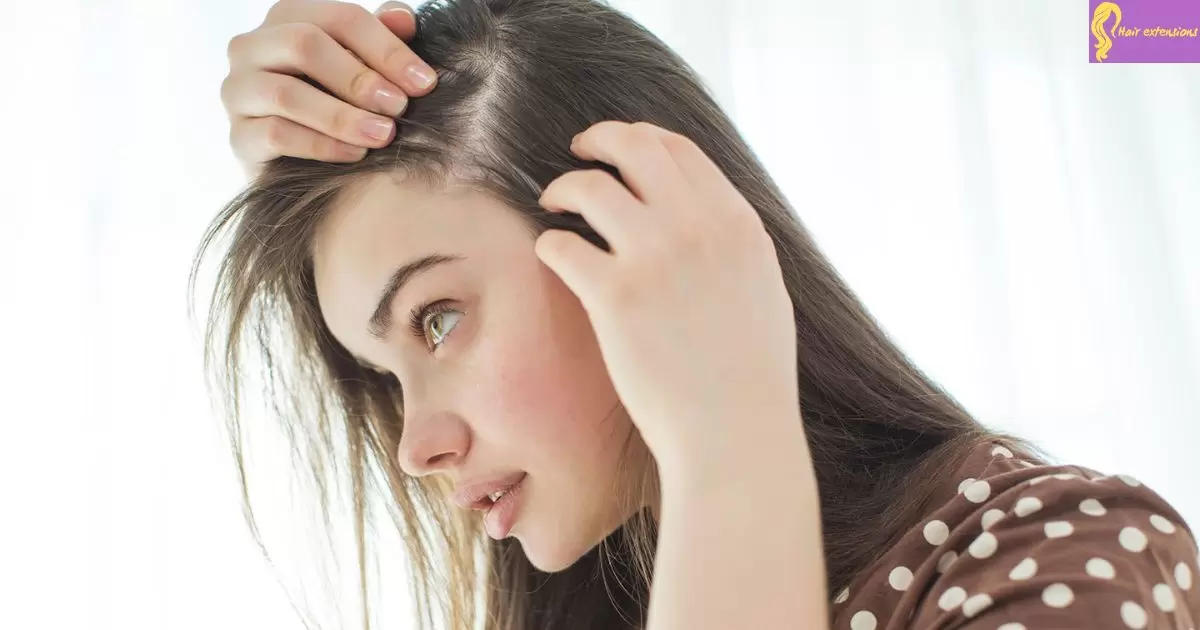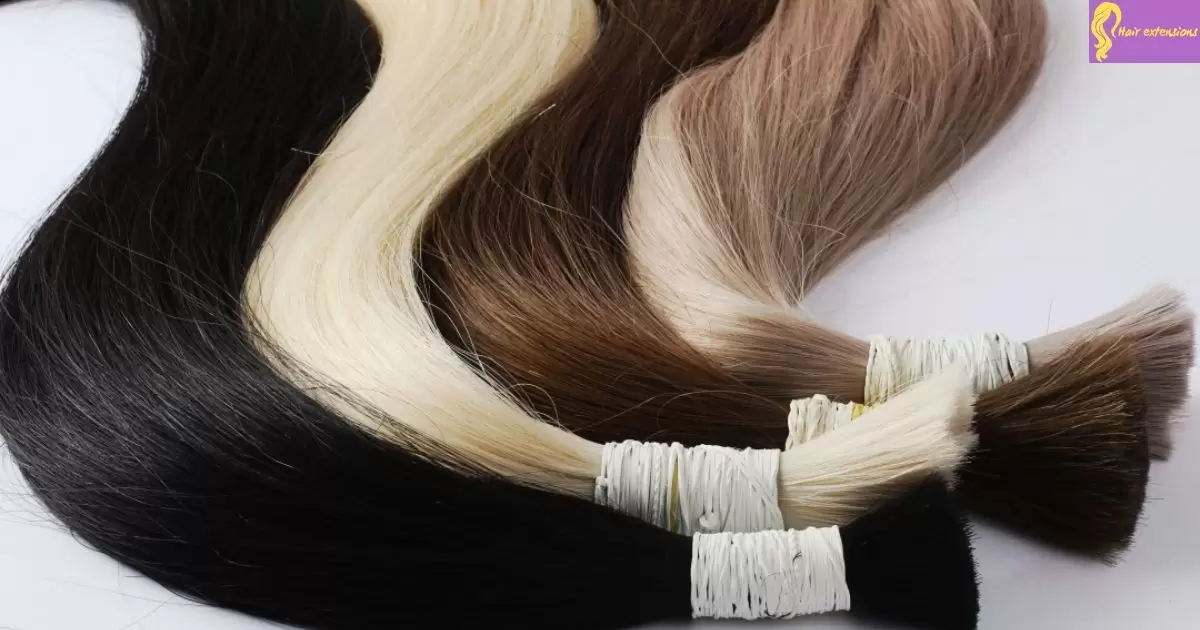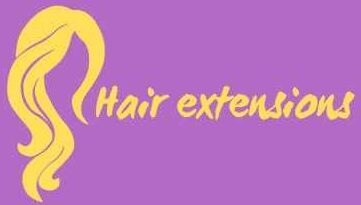Many wonder if using clip in hair extensions can cause damage. Clip ins are regularly visible as a safer alternative than different semi-everlasting strategies. However, flawed use, low-pleasant hair, or immoderate weight and anxiety from the wefts can lead to hair breakage, traction alopecia, and different problems. Proper application and hair care are essential.
Do Clip In Extensions Damage Hair?” This is a common concern. Clip in hair extensions are convenient, but they can potentially cause issues. If not applied properly, the clips can pull and break your natural hair. Additionally, the weight of the extensions puts strain on your hair and scalp. Improper care and sleeping with them in worsens damage.
Clip in hair extensions can potentially harm your natural hair if not used properly. The clips can pull and motive breakage, mainly if set up too tightly. The brought weight of the wefts puts strain at the hair follicles, that could result in traction alopecia through the years.Proper installation, limiting wear time, and following hair care tips helps minimize damage.
Understanding Hair Damage
Before delving into the specifics of clip in extensions, it’s crucial to recognize the fundamental causes of hair damage. Hair, particularly the outermost defensive layer known as the cuticle, can grow to be compromised due to different factors, inclusive of:
Physical Stress
Excessive tension, pulling, and friction at the hair strands can result in cuticle damage, breakage, and weakened hair follicles.This type of physical stress is a significant concern when using any hair extension method, including clip ins.
Chemical Damage
Harsh chemical materials determined in sure hair merchandise, together with bleaches, dyes, and relaxers, can strip the hair of its herbal oils and weaken the cuticle layer, making it greater at risk of breakage.
Heat Damage
Excessive warm temperature from styling tools like blow dryers, flat irons, and curling irons can motive the hair cuticle to reinforce and end up dry, brittle, and susceptible to breakage.
Environmental Factors
Exposure to factors like solar, wind, and pollution can also contribute to hair harm with the aid of drying out the strands and causing cuticle roughness.
The Potential Risks of Clip In Extensions
While clip in extensions are regularly touted as a more secure alternative to more permanent strategies, there are nonetheless capability risks related to their use. Here are some factors that can contribute to hair harm while the use of clip ins:
Tension and Pulling
The very act of clipping in and disposing of the extensions can purpose tension and pulling on your natural hair, especially if the clips are not carried out or eliminated successfully. This bodily pressure can lead to breakage, traction alopecia (gradual hair loss due to steady pulling), and damaged follicles through the years.
Weight and Stress

Clip in extensions come within the shape of wefts or rows of hair which are attached for your natural hair using clips or clamps. The brought weight of those wefts can put sizable strain to your hair follicles, in particular in case you’re the use of heavy or thick extensions. This constant pressure can weaken the hair and reason it to break or fall out.
Improper Installation
If the clip in extensions are not mounted efficiently, with the clips located too close to the scalp or too tightly clamped, it is able to motive immoderate anxiety and pulling in your natural hair, main to ability damage.
Quality of Extensions
The quality of the clip in extensions you use is also a crucial factor. Extensions crafted from low-fine artificial or processed human hair may be greater susceptible to tangling, matting, and dropping, which can in addition make a contribution to hair damage.
Sleeping with Extensions
Many hair experts propose towards sound asleep with clip in extensions, as the regular friction and stress on your herbal hair can motive sizeable harm, especially if the extensions aren’t nicely secured.
Minimizing the Risks: Tips for Safer Clip In Extension Use
While using clip in extensions does bring a few risks, there are several steps you may take to decrease the ability for hair harm:
Choose High-Quality Extensions

Invest in extremely good, one hundred% Remy human hair extensions from respectable brands. Remy hair is cautiously collected to make certain the cuticles stay intact and aligned within the equal path, ensuing in smoother, tangle-loose extensions that are much less probably to purpose damage.
Proper Installation and Removal
Learn the right techniques for putting in and casting off clip in extensions to lessen tension and pulling to your natural hair. Work in small sections, and make certain that the clips are not placed too near the scalp or tightened excessively.
Limit Wear Time
While the convenience of clip ins is appealing, it’s best to limit their continuous wear time to avoid excessive stress on your hair follicles. Consider taking breaks and giving your hair a rest between wears.
Gentle Hair Care Routine
Adopt a gentle hair care routine when wearing clip in extensions. Use sulfate-unfastened shampoos and conditioners, and keep away from immoderate warmth styling or chemical remedies that could in addition weaken your natural hair.
Brush and Detangle Regularly
Regularly brushing and detangling your Weft Hair Extensions with a huge-tooth comb or a specialized extension brush can assist prevent matting and tangling, which could reason excessive pulling and breakage.
Proper Securing for Sleep
If you choose to sleep along with your clip in extensions, make certain they may be well secured and located to minimize friction and strain on your herbal hair. Consider the usage of a silk pillowcase or a free, soft hair tie to maintain the extensions contained.
Weighing the Pros and Cons
While there are ability dangers related to using clip in hair extensions, there also are numerous advantages to keep in mind:
Pros of Clip In Extensions
- Temporary and Commitment-Free: Unlike more permanent extension methods, clip ins can be easily removed and reapplied, allowing for versatility and flexibility in your hairstyle.
- Minimal Damage (With Proper Use): When used effectively and with incredible extensions, clip ins can be a incredibly secure choice in comparison to different semi-permanent or permanent extension strategies.
- Affordable and Accessible: Clip in extensions are usually more inexpensive and available than professional salon extensions, making them a value-powerful solution for the ones looking for brief length and volume.
- Low Maintenance: Unlike different extension techniques that require regular salon visits for tightening or removal, clip ins may be easily maintained at home with right care.
Cons of Clip In Extensions
- Potential for Damage: As discussed, unsuitable use, low-first-class extensions, or excessive weight and tension can cause hair breakage, traction alopecia, and other issues.
- Limited Styling Options: Clip in extensions might not mixture as seamlessly as other extension strategies, and certain hairstyles or updos can be challenging to achieve without exposing the wefts.
- Temporary Solution: While convenient, clip ins are a brief solution and need to be eliminated and reapplied regularly, which can be time-ingesting for some individuals.
- Visible Clips or Wefts: Depending for your hair kind and fashion, the clips or wefts of the extensions may be seen, in particular if not applied correctly or if the extensions are not nicely-matched on your herbal hair.
Professional Advice and Consultation
If you’re thinking about the usage of clip in hair extensions, it’s quite advocated to are seeking for recommendation from a expert hairstylist or trichologist (a specialist in hair and scalp fitness). They can determine your man or woman hair type, texture, and circumstance, and provide customized guidelines at the great extension techniques, application strategies, and hair care workouts to decrease the threat of harm.
Additionally, it is essential to follow the instructions supplied with the aid of the extension producer and to be diligent in your hair care ordinary when carrying clip ins. Regular trims, deep conditioning treatments, and avoiding excessive warmness and chemical treatments can assist preserve the health and integrity of your natural hair even as enjoying the advantages of clip in extensions.
Understanding Hair Structure and Damage

To better recognize the capacity impact of clip in extensions on hair health, it is critical to have a fundamental information of hair structure and the different factors which can make a contribution to harm. In this section, we’re going to delve deeper into the anatomy of hair and the mechanisms at the back of common types of hair harm.
Hair Anatomy
Hair is a complex structure made up of several layers:
Medulla
The innermost layer of the hair shaft, the medulla, is a gentle, hollow center that isn’t always present in all hair types. It is more often than not composed of keratin and facilitates to insulate the hair.
Cortex
The cortex is the center layer of the hair shaft and is answerable for its strength, elasticity, and coloration. It is made from lengthy, tightly packed protein strands called keratin, that are held together by using disulfide bonds. The situation of the cortex performs a vital function in the usual fitness and look of hair.
Cuticle
The outermost layer of the hair shaft is the cuticle, which consists of overlapping layers of flat, skinny cells that resemble scales or shingles. The cuticle acts as a shielding barrier, protective the cortex from damage and stopping moisture loss. When the cuticle is unbroken and mendacity flat, it offers hair a smooth, vibrant appearance. However, at the same time as the cuticle is raised or damaged, it is able to cause dryness, frizz, and breakage.
Common Types of Hair Damage
Hair damage can occur in several ways, affecting different layers of the hair structure:
Physical Damage
Physical damage is due to excessive anxiety, pulling, or friction on the hair strands. This kind of damage can cause cuticle lifting, cortex breakage, and weakened hair follicles, in the long run resulting in split ends, breakage, and capability hair loss.
Chemical Damage
Exposure to harsh chemical substances, inclusive of those determined in positive hair dyes, bleaches, relaxers, and a few styling products, can strip the hair of its herbal oils and disrupt the disulfide bonds in the cortex. This can cause the cuticle to raise, leading to dryness, brittleness, and an accelerated risk of breakage.
Thermal Damage
Excessive warmth from styling tools like blow dryers, flat irons, and curling irons can cause the cuticle to boost and the cortex to end up dehydrated and brittle. Prolonged exposure to excessive warmness also can result in protein degradation and weaken the hair’s structural integrity.
Environmental Damage
Environmental elements like sun publicity, pollution, and hard water also can make a contribution to hair harm. UV rays can cause oxidative strain and weaken the hair’s proteins, while pollution and minerals in hard water can leave a buildup on the hair, main to dryness and dullness.
Understanding Hair Damage and Clip In Extensions
When it comes to clip in extensions, the primary subject is the capability for bodily damage resulting from tension, pulling, and the introduced weight of the extensions. The act of clipping in and removing the extensions can create strain at the hair follicles, main to breakage and traction alopecia (sluggish hair loss due to regular pulling).
Additionally, the weight of the wefts can placed giant stress on the hair, in particular if the extensions are thick or heavy. This consistent pressure can weaken the hair and purpose it to interrupt or fall out over time.
It’s important to note that while clip in extensions are often promoted as a safer opportunity to more everlasting extension strategies, they nevertheless deliver risks and require proper care and alertness to decrease damage.
Minimizing Hair Damage from Clip In Extensions
While there’s no manner to absolutely cast off the hazard of harm whilst the use of clip in extensions, there are several steps you could take to limit the capacity for harm:
- Choose High-Quality Extensions: Invest in amazing, a hundred% Remy human hair extensions from respectable manufacturers. Remy hair is cautiously accrued to make certain the cuticles stay intact and aligned inside the equal route, resulting in smoother, tangle-free extensions that are much less likely to motive damage.
- Proper Application and Removal: Learn the proper strategies for putting in and putting off clip in extensions to reduce tension and pulling to your herbal hair. Work in small sections, and make sure that the clips are not positioned too close to the scalp or tightened excessively.
- Limit Wear Time: While the convenience of clip ins is appealing, it’s fine to restriction their continuous wear time to avoid immoderate stress in your hair follicles. Consider taking breaks and giving your hair a rest between wears.
- Gentle Hair Care Routine: Adopt a gentle hair care ordinary when wearing clip in extensions. Use sulfate-free shampoos and conditioners, and avoid immoderate warmth styling or chemical remedies that can further weaken your herbal hair.
- Brush and Detangle Regularly: Regularly brushing and detangling your extensions with a wide-enamel comb or a specialised extension brush can help save you matting and tangling, that may motive immoderate pulling and breakage.
- Proper Securing for Sleep: If you select to sleep with your clip in extensions, make certain they are nicely secured and located to reduce friction and stress on your natural hair. Consider the usage of a silk pillowcase or a free, smooth hair tie to keep the extensions contained.
By following these hints and being mindful of the potential risks, you may revel in the benefits of clip in extensions while minimizing the probabilities of hair damage. However, it is constantly recommended to seek advice from a expert hairstylist or trichologist to make certain you are taking the right precautions on your individual hair kind and condition.
FAQs
Can clip in hair extensions cause damage?
Yes, clip in extensions can potentially damage your natural hair if not used properly.
What kind of damage can clip in extensions cause?
They can lead to breakage, pulling, traction alopecia (gradual hair loss), and general weakening of the hair strands.
How can I prevent damage from clip in extensions?
Use high-quality remy human hair extensions, apply and remove them gently, limit wear time, and maintain a gentle hair care routine.
Conclusion
The query Do Clip In Extensions Damage Hair? is an crucial one. If used incorrectly or with terrible satisfactory extensions, clip ins can result in hair breakage and other harm over time.However, with proper care and great extensions, the dangers may be minimized. Follow software commands carefully and provide your hair breaks between wears. By taking precautions, you can enjoy clip in extensions whilst maintaining your herbal hair healthy.

